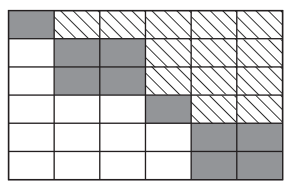ordqz
QZ 分解で固有値の並べ替え
構文
説明
[ は、AAS,BBS,QS,ZS] = ordqz(AA,BB,Q,Z,select)[AA,BB,Q,Z] = qz(A,B) により生成される QZ 分解 Q*A*Z = AA および Q*B*Z = BB を並べ替え、並べ替えられた行列のペア (AAS,BBS) を直交行列 (QS,ZS) に沿って返して QS*A*ZS = AAS および QS*B*ZS = BBS が成立するようにします。
この並べ替えで、選択された固有値のクラスターは、疑似三角行列の組 (AAS,BBS) の最初の (左上の) 対角ブロックに現れます。ZS の最初の列は、対応する不変部分空間にまたがります。logical ベクトル select は、選択したクラスターを e(select) として指定します。ここで e = ordeig(AA,BB) です。
例
入力引数
出力引数
詳細
ヒント
AAに複素共役対 (下対角上にある非ゼロの要素) がある場合、この組を同じクラスターに移動する必要があります。それ以外の場合、ordqzはこの組を維持しようとします。selectが共役対の 2 つの固有値で同じでない場合、ordqzは両方が選択されているものとして扱います。clustersが共役対の 2 つの固有値で同じでない場合、ordqzは両方が大きなインデックスをもつクラスターの一部であるものとして扱います。
参照
[1] Kressner, Daniel. “Block Algorithms for Reordering Standard and Generalized Schur Forms.” ACM Transactions on Mathematical Software 32, no. 4 (December 2006): 521–532. https://doi.org/10.1145/1186785.1186787.
拡張機能
バージョン履歴
R2006a より前に導入
